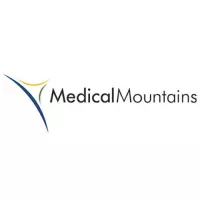
Tuttlingen – Whether instruments, implants, sutures or probes: Gamma radiation is used for sterilization in a number of medical products. However, the radionuclide cobalt 60 required for this is becoming increasingly expensive and difficult to obtain. MedicalMountains GmbH is now addressing politicians and authorities with a position paper and warns of bottlenecks that affect companies and patients alike.
The cost of gamma irradiation has skyrocketed in recent years. The reason for this is the shortage of cobalt 60 on the markets. To produce larger quantities, the naturally occurring cobalt isotope 59 is introduced into nuclear reactors and irradiated with neutrons. This happens primarily in Canada and Russia; the number of providers is very manageable. The low availability, however, meets a currently high demand: contract sterilizers in Germany who depend on cobalt 60 are in a dilemma. "On the one hand, the medical device industry has an enormous need," recalls Meinrad Kempf, project manager at MedicalMountains GmbH, "especially since a lot of sterile packaging, test systems and protective equipment are needed in the course of the Covid 19 pandemic." On the other hand, it is it is a risky game for service providers to invest in additional radiation capacities now. "As long as there is no security of supply with cobalt 60, hardly anyone will dare to take this step," suspects Meinrad Kempf.
To make matters worse, the competing process using ethylene oxide has fallen into disrepute. The gas is considered a so-called "CMR substance" with carcinogenic, mutagenic or reprotoxic properties. There is currently a discussion at European level to what extent approval under the Biocidal Products Regulation is possible - the result is open. If the procedure were to be restricted against this background, gamma irradiation would be the first alternative. The pressure in the already tight bottleneck would continue to rise.
The consequences are obvious for MedicalMountains Managing Director Julia Steckeler. "It will be the first to hit small and medium-sized companies, which are either unattractive for service providers due to low sales or cannot keep up with the price increase," she is certain. Thinking it through consequently, sterile existing or new products would not come onto the market in time or at all.
"In order to ensure that medical device manufacturers have sufficient opportunities for gamma sterilization and to curb the sharply increased procurement costs, the supply of cobalt 60 must be ensured and the capacities for irradiation expanded," is the conclusion in the position paper. Three proposed solutions are put up for discussion: a national procurement strategy for cobalt 60, funding programs for the production of cobalt 60 in Europe and the financial support of R&D projects to examine alternative processes. "Manufacturers are already facing major challenges due to the implementation of the EU-MDR and the consequences of the Covid-19 pandemic," says Julia Steckeler. "It would be fatal if another problem area were to arise during sterilization."
The position paper is available at this link.





